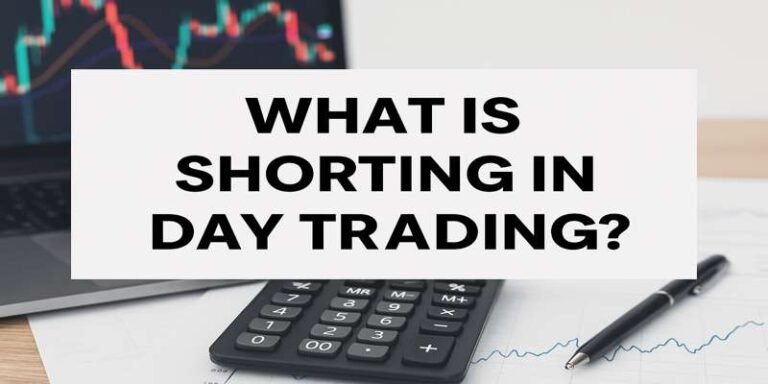
What is Shorting in Day Trading? How Short Selling Really Works
What is Shorting in Day Trading?
Day trading has become a highly popular method for individuals looking to generate income through the stock market. One critical strategy within day trading is short selling or “shorting.” This comprehensive guide will break down everything you need to know about shorting, including detailed examples, strategies, and important considerations.
Introduction to Short Selling
Short selling involves betting against a stock. Traders borrow shares from a brokerage, sell them immediately, and aim to buy them back later at a lower price. The difference between the selling and buying prices becomes the trader’s profit—or loss.
Understanding the Real Value of a Stock can help traders determine when a stock is overpriced and ripe for short selling.
For a regulatory overview, read the SEC’s official explanation of short selling.
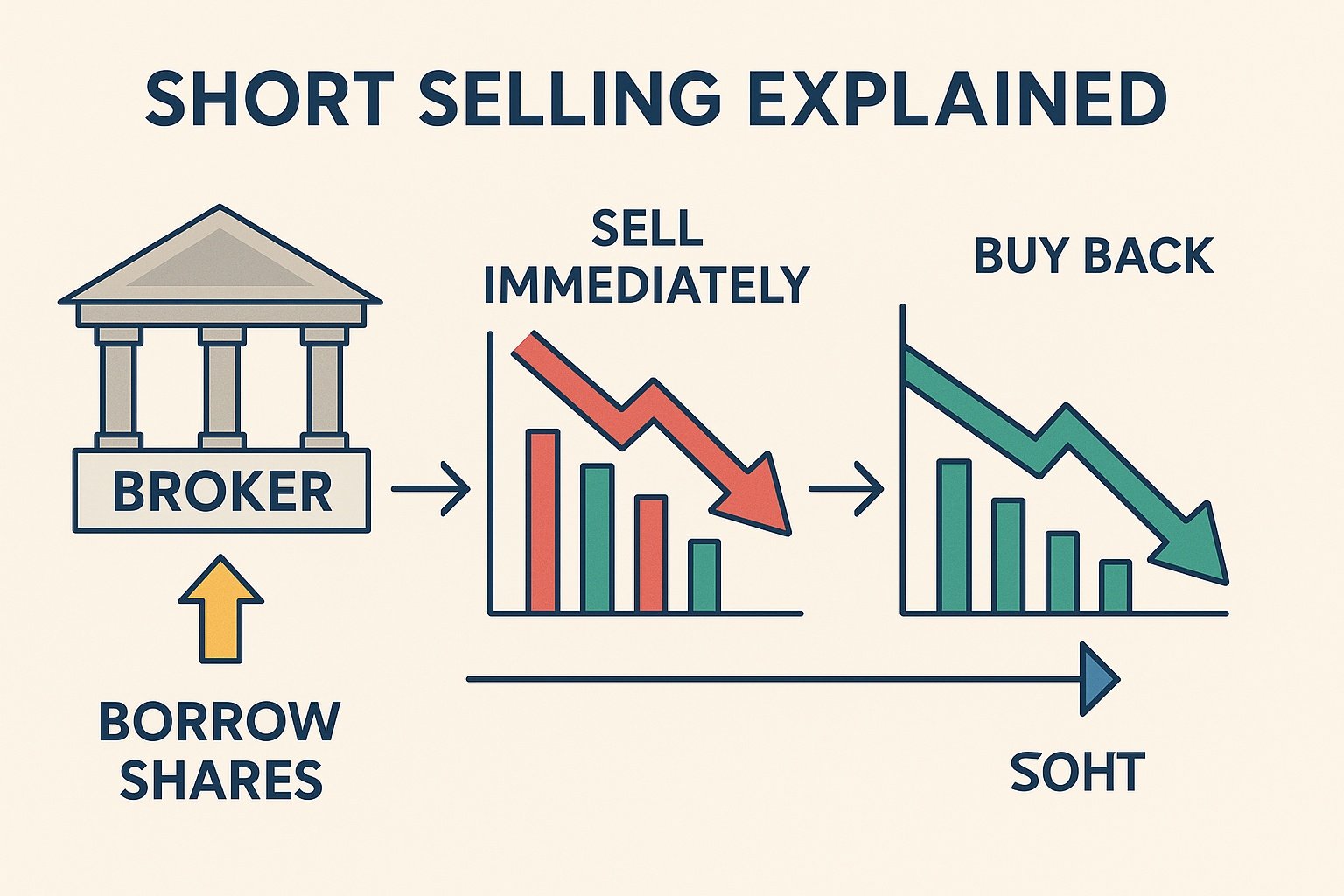
Shorting is also subject to regulation by bodies like the SEC under Regulation SHO.
How Shorting Works in Day Trading
Short selling in day trading occurs within a single trading day. Traders open and close their positions before the market closes to avoid overnight risks.
Step-by-Step Example:
- Identify a stock you believe will decline in price.
- Borrow the shares from your broker.
- Immediately sell the borrowed shares.
- Repurchase the shares later at a lower price.
- Return the shares to the broker, keeping the difference as profit.
See our Day Trading Strategies PDF for more insights. You can also explore Investopedia’s breakdown of short selling.
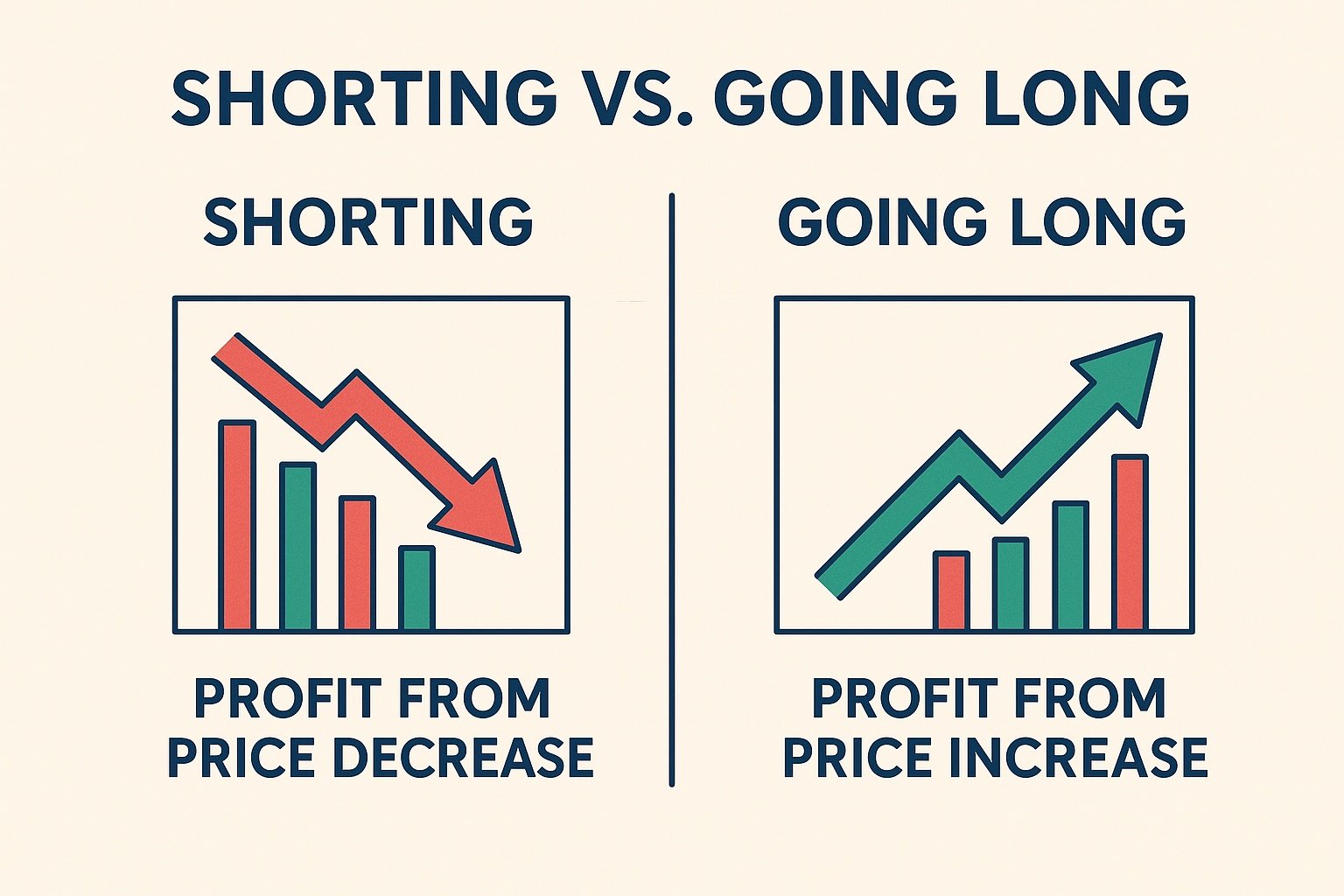
Key Reasons Traders Short Stocks
- Negative news or poor earnings reports
- Technical indicators showing downward trends
- Overvalued stock fundamentals
- Bearish economic outlooks
Learn how a Stock’s Volume Can Affect its Price. CNBC also explains why shorting is popular.

Risks Associated with Short Selling
- Unlimited potential losses
- Short squeezes
- Borrowing constraints
Learn more from Why Some Brokers Don’t Allow Hedging and the Fidelity guide to short selling risks.
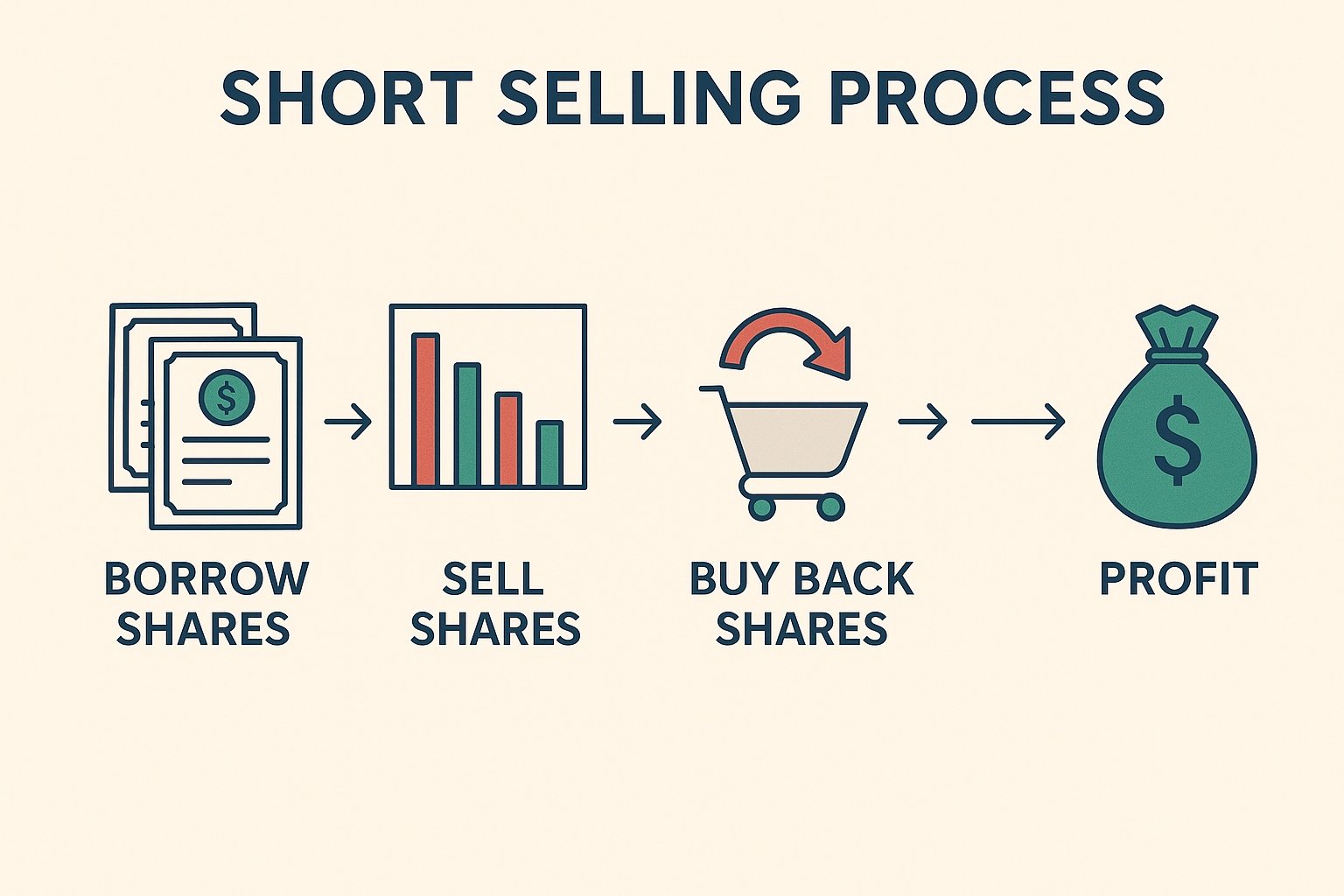
Essential Strategies for Successful Short Selling
Technical Analysis:
Use candlestick patterns, moving averages, and momentum indicators.
Fundamental Analysis:
Target weak balance sheets and poor earnings.
Risk Management:
Set clear stop-loss orders.
See Best Indicator for Swing Trading and MarketWatch: How to Short a Stock.
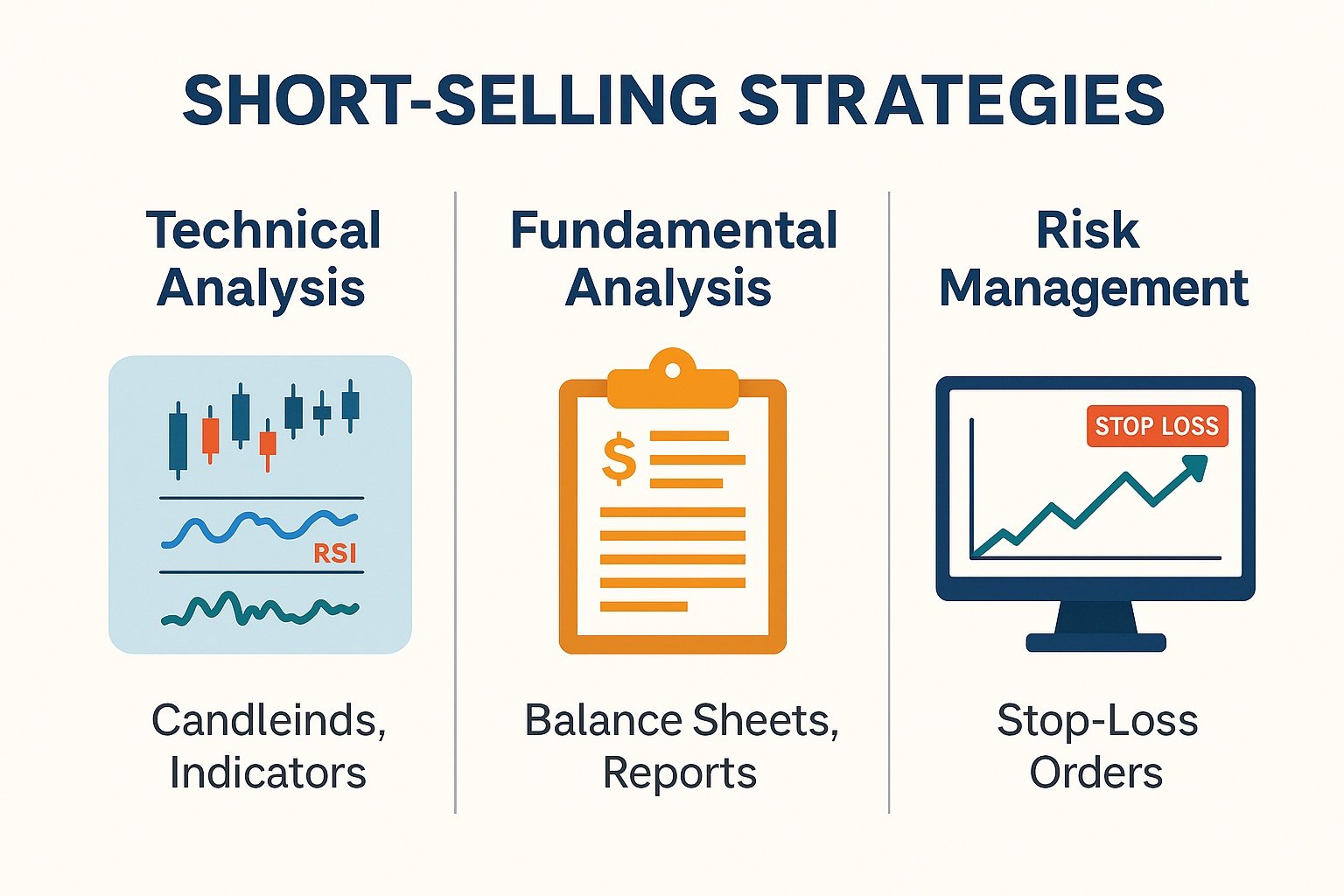
Case Study: Famous Short Selling Examples
Tesla (TSLA)
Often shorted due to volatility and high valuation.
GameStop (GME)
The GameStop short squeeze in 2021 made history.
See our Tesla Stock Predictions.
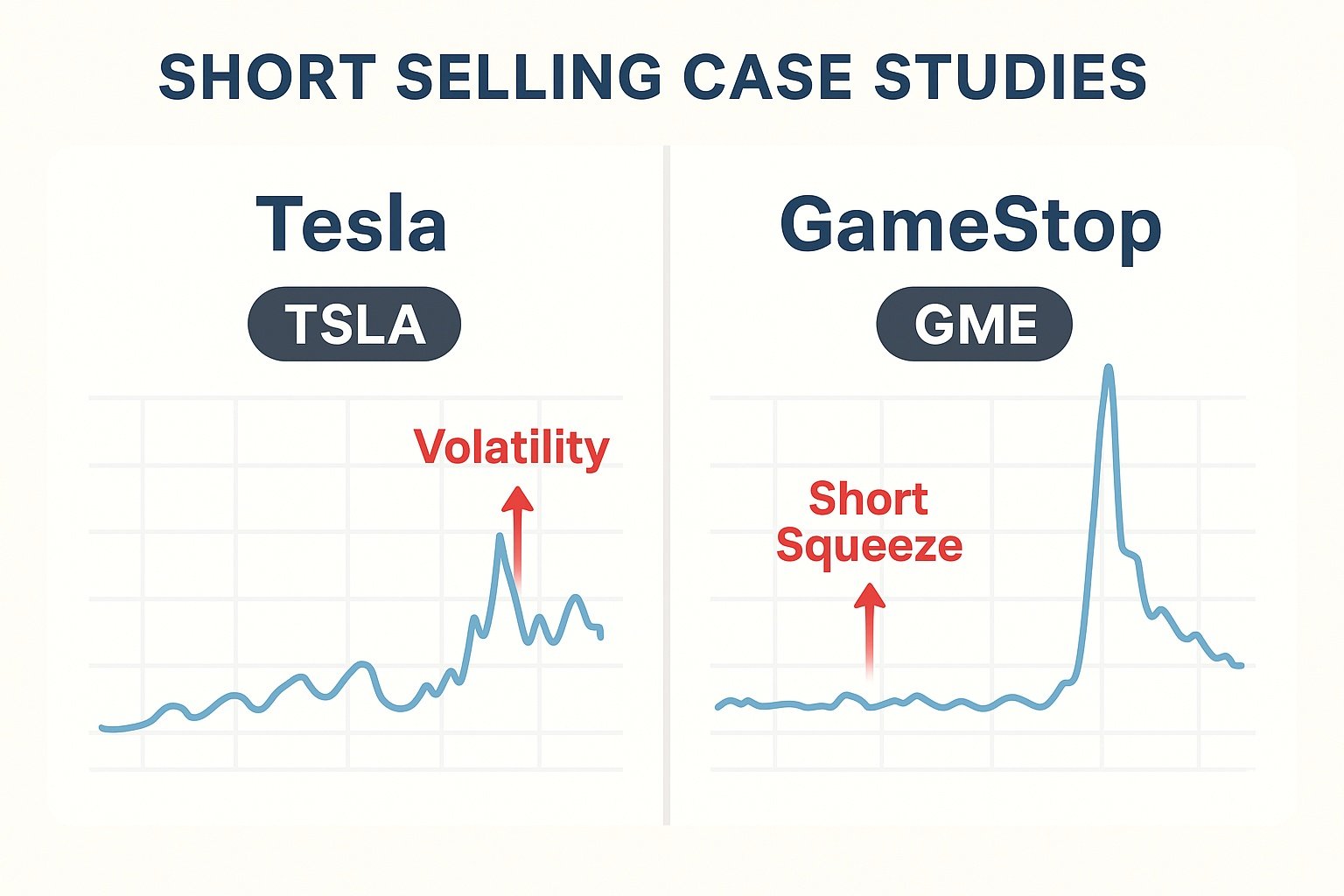
Advanced Short Selling Techniques
- Pair Trading: Short one and long another
- Using Options: Use puts for defined risk
Read Bull and Bear Spreads for Options and CME Options Primer.

FAQs About Short Selling
What is a short squeeze? A sudden price increase forcing short sellers to buy back.
Can anyone short stocks? Yes, with a margin account.
How long can I hold a short position? Indefinitely, but day traders close by end of day.
Is short selling unethical? No, it supports market efficiency.
What’s the cost of shorting? Interest, borrow fees, and possible dividends. See FINRA’s risks page.
Short selling—also called shorting—is a trading technique where you profit when a stock’s price falls. It’s widely used by hedge funds and day traders. Here’s a complete definition of shorting from Investopedia.
Conclusion
Short selling is a powerful but risky strategy. It requires discipline and research.
Read more: Best Day Trading Books and Yahoo Trading Strategies.
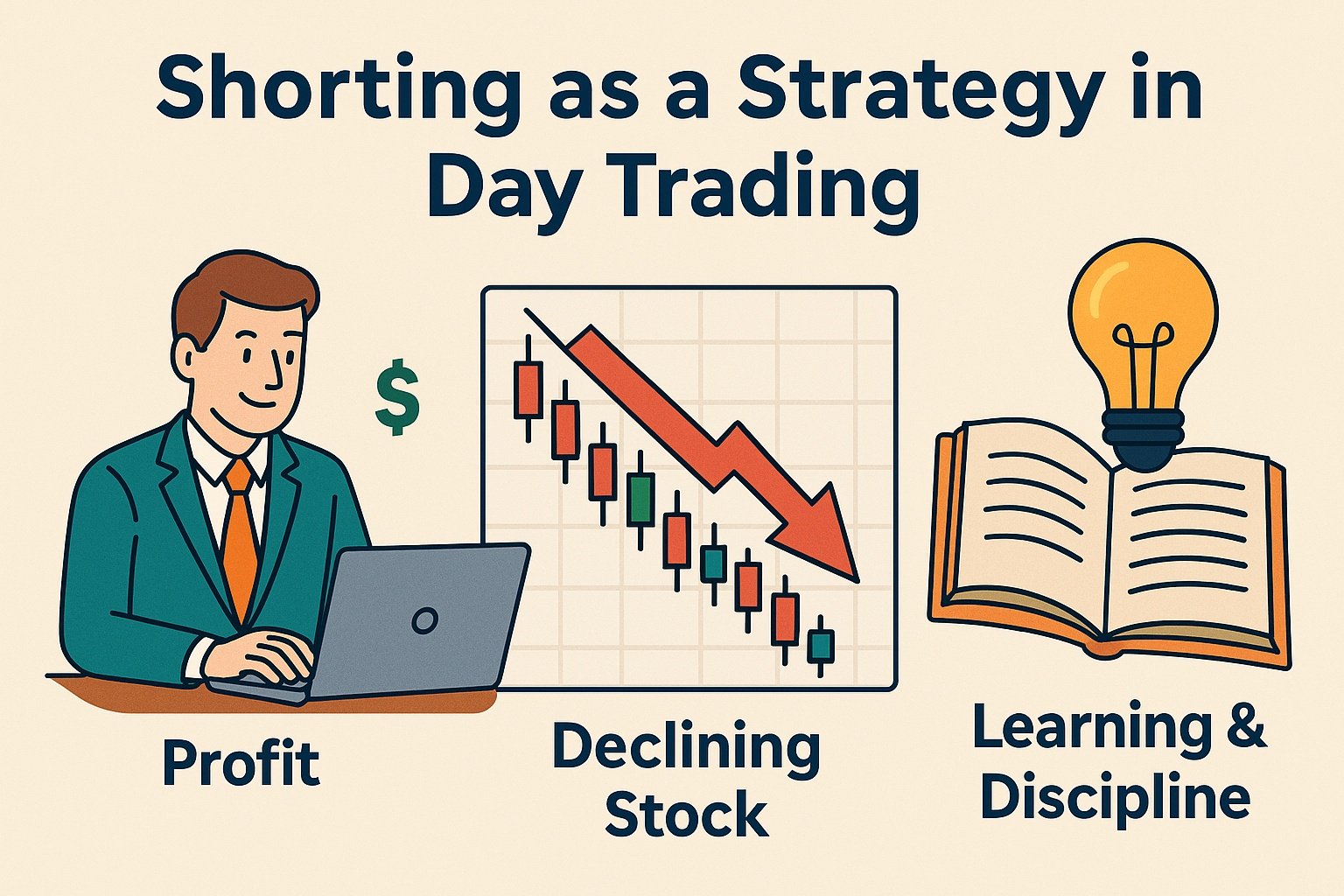
🌐 Learn More About Short Selling
A beginner-friendly breakdown of how short selling works, the risks, and key market mechanics.
Official rules from the U.S. Securities and Exchange Commission on short sale regulation and compliance.
Practical examples and comparison of long vs. short trades with charts and pros/cons.
Understand how traders get trapped when stocks spike during aggressive short squeeze events.